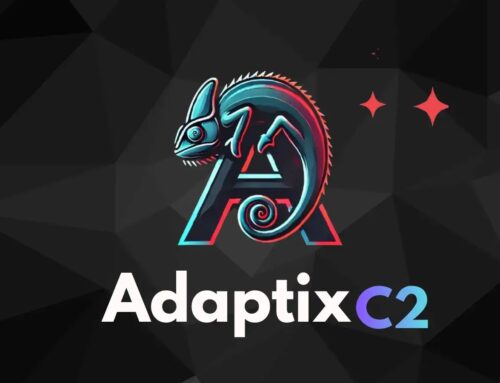
Cursor AI Code Editor RCE Vulnerability Enables “autorun” of Malicious on your Machine
Unmasking the Threat: Cursor AI Code Editor’s Critical RCE Vulnerability
The convergence of AI and integrated development environments (IDEs) promises unprecedented productivity. However, this innovation introduces new attack surfaces. A critical remote code execution (RCE) vulnerability, tracked as CVE-2024-XXXXX (CVE number pending official assignment at the time of this publication), has been unearthed in the Cursor AI Code Editor. This flaw allows a malicious code repository to automatically execute code on a user’s machine upon being opened, significantly bypassing typical security prompts and user consent.
Discovered by the security research team at Oasis Security, this vulnerability highlights the immediate need for vigilance among developers and organizations leveraging AI-powered development tools. The implications are severe, ranging from data exfiltration to complete system compromise, all triggered by what appears to be a benign action: opening a project.
The Auto-Run Exploit: How It Works
The core of this vulnerability lies in Cursor AI’s default configuration settings. Unlike traditional IDEs that typically require explicit user permission before executing untrusted code or scripts from a newly opened project, Cursor AI’s default behavior, when confronted with a malicious repository, exploits a trusted execution path. This means that opening a project containing specially crafted files can lead to immediate and unauthorized code execution.
The attack vector is insidious: a developer might clone an outwardly legitimate-looking repository, perhaps from a compromised GitHub account or a cleverly disguised phishing attempt. Once opened in Cursor AI, the vulnerability leverages an “autorun” mechanism, allowing the embedded malicious code to execute with the privileges of the Cursor AI application itself. This circumvents the usual security layers, leaving the user’s system exposed.
Impact and Potential Consequences
The potential consequences of this RCE vulnerability are extensive and severe. Attackers could:
- System Compromise: Gain full control over the user’s machine, installing backdoors, ransomware, or other malware.
- Data Exfiltration: Steal sensitive data, including source code, API keys, intellectual property, and personal identifiable information (PII).
- Supply Chain Attacks: Inject malicious code into legitimate software projects, potentially compromising downstream users and organizations a significant concern for open-source contributors and enterprise development teams.
- Credential Theft: Capture user credentials for various services and systems accessed from the compromised machine.
- Resource Abuse: Utilize the compromised machine for crypto-mining or as part of a botnet.
Remediation Actions and Mitigation Strategies
Immediate action is crucial for all Cursor AI Code Editor users. While a definitive patch from the vendor is the ultimate solution, several steps can be taken to mitigate the risk:
- Update Immediately: Monitor official Cursor AI channels for security updates and patch your editor as soon as a fix is released. This is the single most important step.
- Source Code Prudence: Exercise extreme caution when cloning or opening repositories from untrusted or unverified sources. Always verify the authenticity of the source before proceeding.
- Least Privilege Principle: Operate your development environment with the principle of least privilege. Do not run Cursor AI or other development tools with administrative rights unless absolutely necessary.
- Dedicated Development Environments: Consider using virtual machines or isolated containerized environments for working with new or untrusted codebases. This sandboxes potential threats, preventing them from impacting your host system.
- Endpoint Detection and Response (EDR): Ensure your systems are equipped with robust EDR solutions capable of detecting and blocking suspicious executable behavior, even if initiated by a trusted application.
- Firewall Rules: Implement strict outbound firewall rules to restrict unexpected network connections initiated by development tools.
Tools for Detection and Mitigation
Leveraging appropriate security tools can aid in detection and bolster your defensive posture:
| Tool Name | Purpose | Link |
|---|---|---|
| Virustotal | File and URL analysis for malware detection. | https://www.virustotal.com/ |
| ClamAV | Open-source antivirus engine for scanning files and directories. | https://www.clamav.net/ |
| OWASP Dependency-Check | Identifies known vulnerabilities in project dependencies. | https://owasp.org/www-project-dependency-check/ |
| Snort/Suricata | Intrusion detection systems for network traffic analysis. | https://www.snort.org/ | https://suricata.io/ |
Conclusion: A Call for Heightened Awareness
The discovery of this critical RCE vulnerability in the Cursor AI Code Editor underscores a fundamental truth in cybersecurity: innovation often introduces new risks. AI-powered tools enhance productivity, but their integration into core development workflows demands a rigorous security posture. This incident serves as a stark reminder for developers and organizations to assess the security implications of their toolchains, prioritize timely patching, and adopt proactive defensive strategies. Maintaining vigilance is paramount in an evolving threat landscape where even trusted tools can become vectors for attack.





